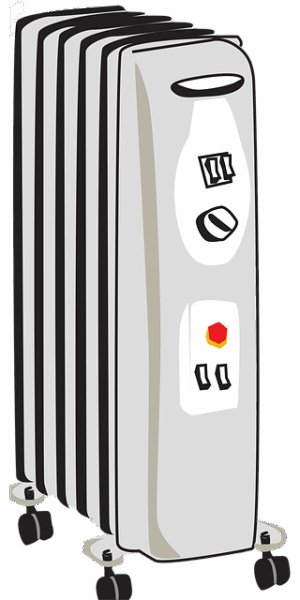Commercial air curtain heaters are innovative, energy-efficient warmth solutions for entrances, utilizing heated air streams to create insulating barriers. Their precise air flow regulation makes them suitable for diverse settings from warehouses to retail stores. Named Entity Extraction (NEE) aids in swiftly gathering critical info about these heaters, including capacity ratings and unique technologies. NLP techniques ensure accurate extraction of data like BTUs or watts, enhancing performance and reducing costs in entrance heating systems. Challenges in extracting named entities from varied text formats require structured approaches, regular expressions, and machine learning models for improved accuracy. These heaters are transforming climate control, offering comfortable indoor environments while minimizing energy consumption in various industries.
“Unveiling the power of commercial air curtain heaters through named entity extraction (NEE) is a game-changer for industries seeking efficient temperature control. This article explores how NEE enhances our understanding of these advanced heating systems, specifically focusing on capacity ratings. From defining key components to extracting precise specifications, we delve into the process, challenges, and real-world applications. By uncovering the potential of commercial air curtain heaters, businesses can make informed decisions, ensuring optimal energy efficiency and performance.”
- Understanding Commercial Air Curtain Heaters
- The Role of Named Entity Extraction
- Extracting Capacity Ratings Accurately
- Challenges and Best Practices
- Applications in Industry and Commerce
Understanding Commercial Air Curtain Heaters

Commercial air curtain heaters are specialized heating solutions designed to provide efficient and targeted warmth at entrances, such as doors and warehouse gates. This technology utilizes a stream of heated air to create an insulating barrier, preventing cold air from entering and maintaining a comfortable indoor climate. By focusing the heat where it’s needed most, these devices offer significant energy savings compared to traditional heating systems, making them ideal for various industrial, commercial, and retail settings.
The unique design of commercial air curtain heaters includes components like motors, fans, and heating elements that work in harmony. Air curtain technology ensures optimal door heating systems by regulating the flow of heated air, creating an efficient industrial air barrier. Whether it’s a busy retail store or a vast warehouse entrance, these heaters are engineered to handle different applications, making them versatile tools for commercial entrance heating.
The Role of Named Entity Extraction

Named Entity Extraction (NEE) plays a pivotal role in understanding and categorizing data related to commercial air curtain heaters, particularly when it comes to capacity ratings. This advanced natural language processing technique identifies and extracts relevant entities such as product names, brands, models, and technical specifications from textual sources. In the context of commercial air curtain heaters, NEE helps businesses and researchers quickly gather vital information about different types of door heating systems available in the market.
By employing NEE, companies can analyze large volumes of text data, including customer reviews, product descriptions, and industry reports, to extract key details about these energy-efficient heating solutions. For instance, it can identify specific features like capacity ratings, power sources, and unique air curtain technology used in various commercial entrance heating applications. This enables businesses to make informed decisions when selecting suitable heated air curtains for warehouse entrance heating or retail store climate control, ensuring optimal performance and cost-effectiveness.
Extracting Capacity Ratings Accurately

Extracting capacity ratings accurately from commercial air curtain heaters is a meticulous process that requires advanced Natural Language Processing (NLP) techniques. By employing sophisticated algorithms and machine learning models, NLP enables the identification and extraction of critical information from technical documents, product manuals, and specifications. This ensures that data on commercial air curtain heater capacity, typically expressed in BTUs or watts, is gathered with precision and consistency.
In the context of commercial entrance heating, air curtain technology plays a pivotal role in enhancing energy efficiency while maintaining comfortable indoor environments. Door heating systems, including heated air curtains, are engineered to create industrial air barriers, effectively controlling the climate at warehouse entrances or retail store entries. Accurate capacity ratings for these door heaters are crucial for matching system performance with facility requirements, thereby optimising energy consumption and overall operational costs.
Challenges and Best Practices

Extracting named entities from text related to commercial air curtain heaters presents unique challenges. These include varying report formats, diverse data structures within documents, and inconsistent terminologies used by manufacturers. To overcome these hurdles, a structured approach is essential. Standardization of data fields, such as defining specific terms for heater capacities and models, facilitates consistent extraction. Utilizing regular expressions and natural language processing techniques can help identify relevant entities like heater specifications, energy efficiency ratings, and application settings (e.g., commercial entrance heating, warehouse entrance heating).
Best practices involve pre-processing text to remove noise and irrelevant data before entity extraction. This includes steps like tokenization, stemming, and lemmatization. Employing machine learning models trained on annotated datasets enhances accuracy in recognizing named entities specific to commercial air curtain heaters, door heating systems, and industrial air barriers. Additionally, incorporating feedback loops for model validation ensures continuous improvement. Energy-efficient heating solutions, like heated air curtains and entrance climate control mechanisms, can be effectively discovered through these practices, enabling efficient searches across a vast array of documents and facilitating informed decisions in the retail store heating or commercial door heaters domain.
Applications in Industry and Commerce

Commercial air curtain heaters have found their niche in various industries and commercial settings, revolutionizing entrance climate control. Their primary application lies in maintaining comfortable indoor environments while minimizing energy consumption. These innovative devices are particularly useful in retail stores, warehouses, and industrial facilities where controlled entry is essential. By employing advanced air curtain technology, they create an insulated barrier at the entrance, heated air curtains that prevent drafts and external elements from penetrating.
This not only enhances customer experience, especially in retail stores, but also contributes to energy efficiency. Door heating systems like these are designed to regulate temperature, ensuring a cozy interior without excessive energy usage. Their versatility extends to commercial entrances, where they can effectively manage traffic flow and provide a welcoming ambiance. Whether it’s a bustling warehouse entrance or a quiet retail store, heated air curtains offer tailored solutions for entrance climate control, promoting both comfort and sustainability.
Named entity extraction (NE) plays a pivotal role in understanding and analyzing commercial air curtain heaters by accurately extracting capacity ratings. This technology ensures that businesses make informed decisions, leading to efficient heating solutions for various industrial and commercial applications. By efficiently navigating the specifications of these heaters, NE facilitates enhanced process optimization, ultimately contributing to cost savings and improved performance in today’s competitive market.






